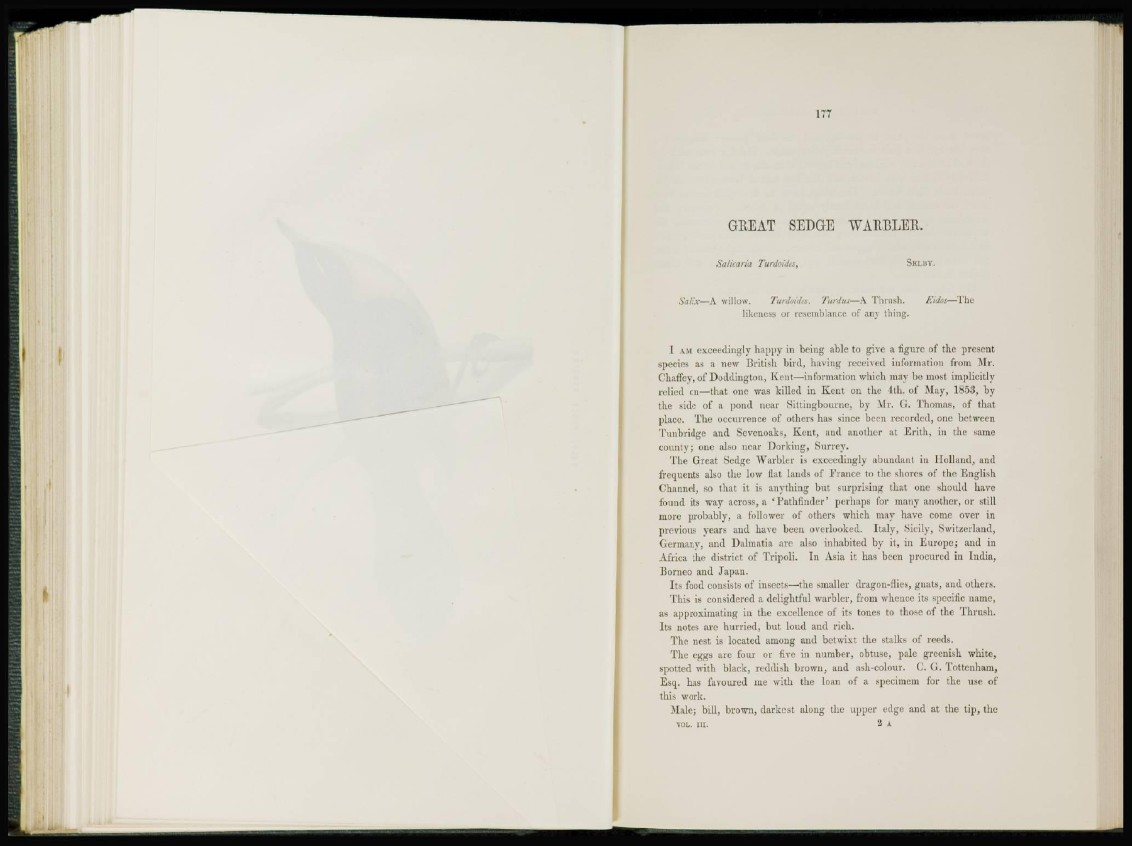
GEEAT SEDGE WAEBLEE.
Saikaria Turdoidts, SSLBT.
Salix—A willow, Turdoides, Tardus—A Thrush. Eidos—The
likeness or resemblance of any thing.
I AM exceedingly happy in being able to give a figure of the present
species as a new British bird, having received information from Mr.
Chaffcy, of Doddington, Kent—information which may be most implicitly
relied on—that one was killed in Kent on the 4th. of May, 1853, by
the side of a pond near Sittingbourne, by Mr. G. Thomas, of that
place. The occurrence of others has since been recorded, one between
Tunbridge and Scvcnoaks, Kent, and another at Erith, in the same
county; one also near Dorking, Surrev.
The Great Sedge Warbler is exceedingly abundant in Holland, and
frequents also the low Hat lands of France to the shores of the English
Channel, so that it is anything but surprising that one should have
found its way across, a 'Pathfinder1 perhaps for many another, or still
more probably, a follower of others which may have come over in
previous years and have been overlooked. Italy, Sicily, Switzerland,
Germany, and Dalmatia are also inhabited by it, in Europe; and in
Africa the district of Tripoli. In Asia it has been procured in India,
Borneo and Japan.
I t s food consists of insects—the ^mailer dragon-flies, gnats, and others.
This is considered a delightful warbler, from whence its specific name,
as approximating in the excellence of its tones to those of the Thrush.
Its notes are hurried, but loud and rich.
The nest is located among and betwixt the stalks of reeds.
The eggs arc four or five in number, obtuse, pale greenish white,
spotted with black, reddish brown, and ash-colour. C. G. Tottenham,
Esq. has favoured me with the loan of a specimem for the use of
this work.
Male; bill, brown, darkest along the upper edge and at the tip, the
vol. in. 2 A.